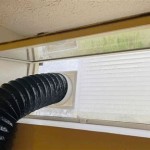How To Get Rid Of Big Spiders In Basement
The presence of large spiders in a basement can be unsettling for homeowners. While most basement spiders are not inherently dangerous, their size and appearance can cause anxiety, and in some cases, certain species are venomous. Effective spider control in a basement environment necessitates a multi-faceted approach encompassing both preventative measures and active removal strategies. Addressing the conditions that attract spiders in the first place is crucial for long-term success.
Spiders, being predators, are drawn to areas where prey is abundant. Basements, often dark, damp, and rarely disturbed, can become havens for insects, which in turn attract spiders. Understanding spider behavior and habitat preferences is the first step in implementing an effective control plan. Identifying the specific species of spiders present can also inform the selection of appropriate control methods. Accurate identification allows for a targeted approach, avoiding unnecessary application of broad-spectrum pesticides.
The basement environment often provides spiders with optimal conditions for survival: stable temperatures, relatively high humidity, and numerous hiding places. These factors contribute to spider infestations within the basement space. Furthermore, the structural characteristics of basements, such as cracks, crevices, and gaps around pipes and wiring, offer easy entry points for spiders. Sealing these entry points is a vital component of an integrated pest management strategy.
Eliminating Food Sources
A primary strategy for controlling spider populations in a basement is to reduce or eliminate their food sources. Spiders prey on insects, so controlling the insect population within the basement will naturally decrease the spider population. This involves identifying and addressing the root causes of insect infestations. Common basement insects include ants, cockroaches, silverfish, and earwigs. Addressing moisture problems, sealing food sources, and eliminating standing water are key steps in reducing insect numbers.
Proper sanitation plays a significant role in insect control. Food crumbs, spills, and improperly stored garbage can attract insects. Regular cleaning of the basement, including vacuuming and sweeping, removes potential food sources and nesting materials for insects. Storing food in airtight containers and promptly cleaning up spills will further reduce the attractiveness of the basement to insects.
The use of insect traps can also be an effective method for reducing the insect population in the basement. Sticky traps placed along walls and in corners can capture crawling insects. Pheromone traps can be used to attract specific insect species. Regular monitoring of these traps provides valuable information about the types of insects present and the effectiveness of control measures. Replacement of traps should occur when full or every three months.
In some cases, professional pest control services may be necessary to address severe insect infestations. A qualified pest control technician can identify the specific insect species present and recommend appropriate treatment options. Integrated pest management (IPM) strategies prioritize non-chemical methods, such as habitat modification and biological control, whenever possible. Chemical treatments should be used judiciously and only when necessary, following all label instructions and safety precautions.
Creating a drier basement environment can also deter insects. Many insects thrive in moist conditions, so reducing humidity levels can make the basement less attractive to them. Dehumidifiers can be used to lower humidity, and proper ventilation can help to prevent moisture buildup. Addressing leaks and condensation problems will further reduce moisture levels.
Physical Removal and Exclusion
Direct removal of spiders and their webs is an immediate way to reduce the spider population in the basement. This can be accomplished using a vacuum cleaner or by carefully capturing spiders in a container and releasing them outdoors. Regular removal of webs will also help to eliminate spider nesting sites and reduce their overall presence.
Vacuuming is an effective method for removing spiders, webs, and egg sacs. A vacuum cleaner with a hose attachment can be used to reach spiders in hard-to-reach areas, such as corners and crevices. After vacuuming, the vacuum bag or canister should be emptied and disposed of properly to prevent spiders from escaping back into the basement.
Sealing potential entry points is crucial for preventing spiders from entering the basement. This includes sealing cracks in the foundation, repairing damaged window screens, and sealing gaps around pipes and wiring. Caulk or expanding foam can be used to seal these openings. Installing door sweeps on basement doors will also help to prevent spiders from crawling under the doors.
The use of mesh screens over basement windows and vents can further prevent spiders and other pests from entering the basement. These screens should be regularly inspected and repaired as needed to ensure that they remain effective. Window wells can also be a source of entry for spiders. Covering window wells with fitted covers can help to prevent spiders from gaining access to the basement.
Regularly inspecting the basement for spiders and webs will allow for early detection and prompt removal. This will help to prevent spider populations from building up to problematic levels. Pay particular attention to areas where spiders are commonly found, such as corners, along walls, and in storage areas.
Repellents and Preventative Measures
Several natural and chemical repellents can be used to deter spiders from entering the basement. These repellents work by creating an unfavorable environment for spiders, encouraging them to seek shelter elsewhere. The effectiveness of these repellents may vary depending on the spider species and the specific environmental conditions.
Essential oils, such as peppermint, tea tree, and eucalyptus, are known to repel spiders. These oils can be diluted with water and sprayed around the perimeter of the basement, focusing on areas where spiders are likely to enter. Cotton balls soaked in essential oils can also be placed in corners and other strategic locations. Reapplication will be necessary every few days or weeks, as the scent diminishes.
Diatomaceous earth (DE) is a natural powder made from fossilized algae. It is a safe and effective insecticide that works by dehydrating insects and spiders. Food-grade DE can be sprinkled around the perimeter of the basement and in areas where spiders are commonly found. It is important to use food-grade DE, as other types of DE can be harmful if inhaled. Regular reapplication may be necessary, especially in damp environments, as moisture can reduce its effectiveness.
Certain plants, such as mint, lavender, and rosemary, are believed to repel spiders. Planting these herbs around the perimeter of the basement or placing potted plants indoors may help to deter spiders. However, the effectiveness of these plants as spider repellents is not definitively proven, and they may not be effective against all spider species.
Chemical spider repellents are also available, but they should be used with caution and according to label instructions. These repellents typically contain pyrethroids or other insecticides that are toxic to spiders. They should be applied only in areas where spiders are known to be present and in accordance with all safety precautions. Proper ventilation is essential when using chemical repellents.
Maintaining a clean and uncluttered basement is another important preventative measure. Clutter provides spiders with hiding places and makes it more difficult to detect and remove them. Regularly organizing and decluttering the basement will help to reduce the attractiveness of the space to spiders. Storing items in sealed containers will also prevent spiders from nesting in them.
Implementing a combination of these strategies – eliminating food sources, physical removal and exclusion, and using repellents and preventative measures – will provide the most effective approach to getting rid of big spiders in the basement. Regular monitoring and maintenance are essential for long-term success. Consistency in applying these methods will significantly reduce the spider population and create a more comfortable basement environment.

How To Get Rid Of Spiders In Your Basement

5 Ways To Get Rid Of Wolf Spiders In Basement

How To Get Rid Of Spiders In Your Basement Family Handyman

How To Get Rid Of Wolf Spiders In Basement 8 Easy Ways 2024

Get Rid Of Basement Spiders Green Giant Home Commercial

How To Keep Spiders Out Of Your Basement Extermpro

Get Rid Of Basement Spiders Green Giant Home Commercial

How To Get Rid Of Spiders 7 Important Steps

How Do I Get Rid Of Spiders In My House Brody Brothers

5 Ways To Get Rid Of Wolf Spiders In Basement
Related Posts







